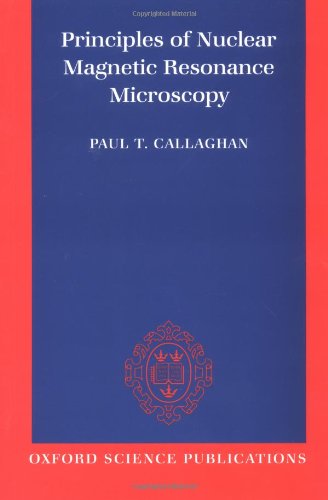Principles of Nuclear Magnetic Resonance Microscopy ebook
Par soto william le mercredi, août 17 2016, 03:37 - Lien permanent
Principles of Nuclear Magnetic Resonance Microscopy by Paul Callaghan


Download eBook
Principles of Nuclear Magnetic Resonance Microscopy Paul Callaghan ebook
Page: 512
Format: djvu
ISBN: 0198539444, 9780198539445
Publisher: Oxford University Press, USA
Work culminated in a Exposed to surface crystallography and diffraction, electron and tunneling microscopy, atomic and molecular beam scattering. Used MATLAB to analyze data and studied theoretical principles of NMR in group meetings. In addition, the similarity between 19F and 1H ( regarding their NMR properties) is a prerequisite for a meaningful overlay between the anatomical 1H MRI with the 19F MRI of labeled cells. Nuclear magnetic resonance is best known for its spectacular utility in medical tomography. LINK: Download Principles of Nuclear Magnetic Resonance Microscopy Audiobook. (1994) Principles of Nuclear Magnetic Resonance Microscopy, Oxford University Press. NMR Logging Principles and Applications By Halliburton Energy Services Houston. Since light is nothing else than electromagnetic radiation, it seems a straightforward idea to use an approach similar to optical imaging in order to get spatially resolved NMR spectra. Prior to the development of three-dimensional magnetic resonance imaging (MRI), the tracking of immune cell migration was limited to microscopic analyses or tissue biopsies. And how it's Smaller objects, such as viruses, or even molecules, are not visible in a microscope. So why does NMR get such a bad rap? You are here: Home / Nanotechnology Books / Magnetic Microscopy of Nanostructures. According to MR principles, the lowest detection limit is 1018 spins per voxel 24. NMR Logging Principles and Applications By Halliburton Energy Services. Understand the physical principle of MR imaging 2. As a structural tool, it always seems to play second fiddle to crystallography, and not many people seem to know about all of the different types of information that NMR can give you. This era saw a step change in his research productivity and impact, culminating in his first book, 'Principles of Nuclear Magnetic Resonance Microscopy' in 1994. Magnetic resonance works by the interaction of electromagnetic radiation with the atomic nuclei in the presence of a magnetic field.